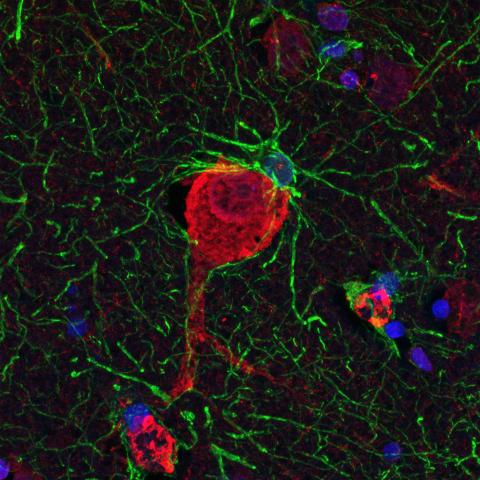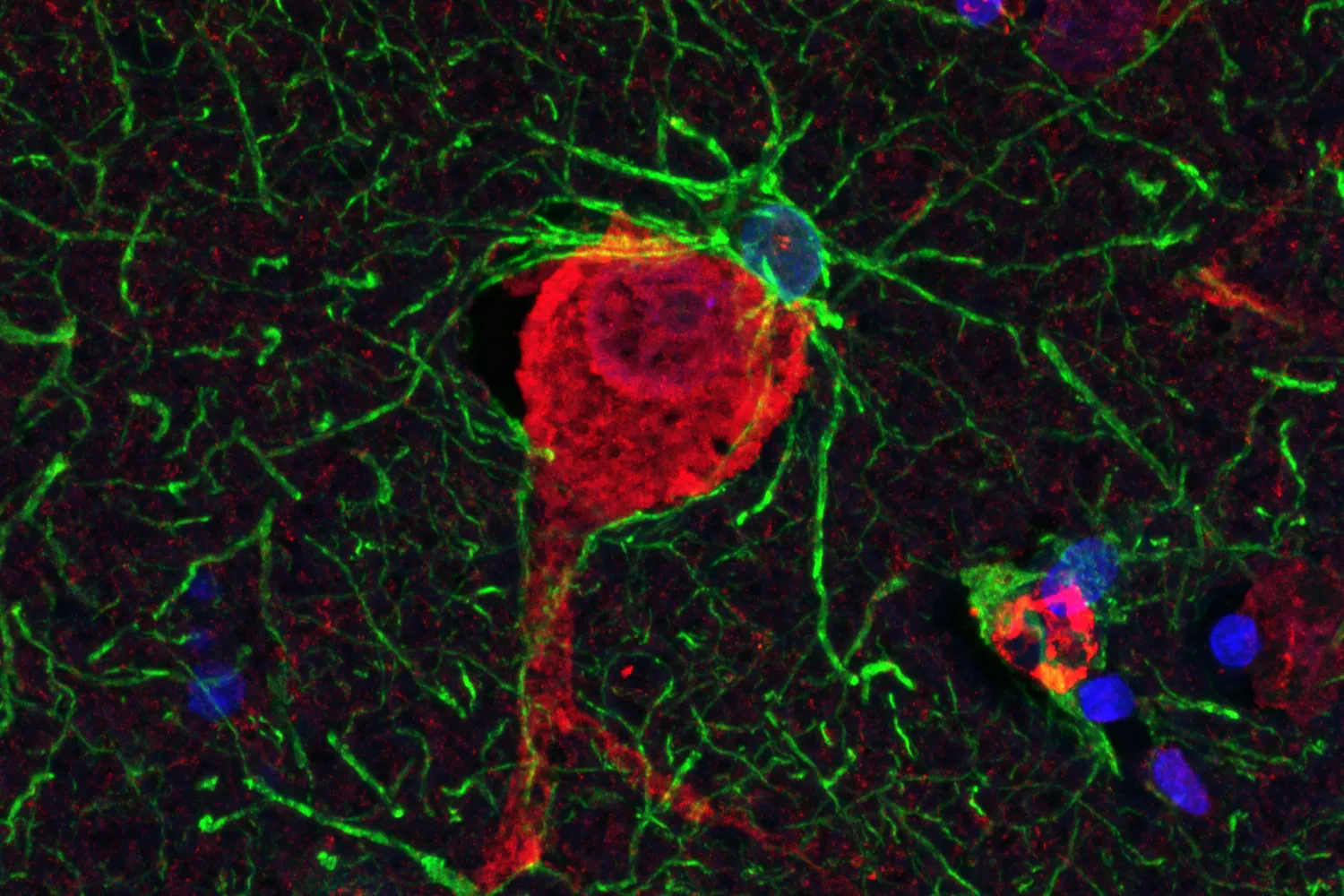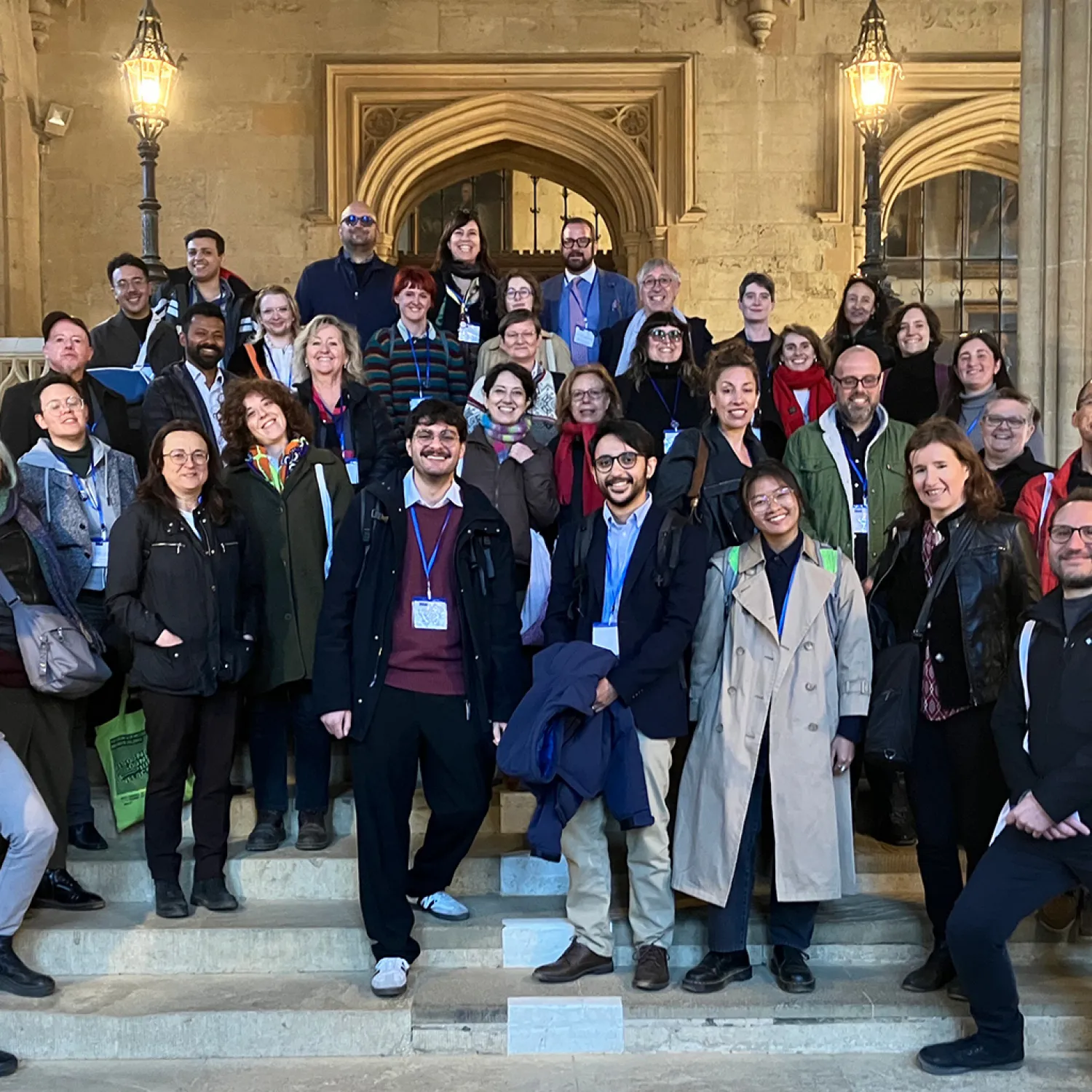Breadcrumb
Gazing at the stars: an interdisciplinary Christ Church collaboration
A recent publication in leading science journal Nature Communications offers novel insights into the function of star-like cells – or ‘astrocytes’ – in the brain, and how they govern the function of brain nerve cells. The article is the product of interdisciplinary collaboration between University of Oxford researchers, including two Christ Church academics, Tutor in Medicine Professor Stephanie Cragg and Tutor in Mathematics Professor Kevin McGerty.
Ask someone what cells are found in the brain, and chances are they will mention neurons – those cells that receive and transmit electrical signals through our nervous system. Ask a neuroscientist, though, and they will tell you that as well as many types of neurons, the brain contains glia. These are cells that support and provide nutrients to neurons, though their many functions are not at present well understood. While they are just as populous as neurons, glial cells receive considerably less attention in neuroscientific research.

Among those seeking to address this gap in the neuroscience literature is a team of Oxford researchers from the Cragg Group, led by Christ Church’s Professor Stephanie Cragg in the University of Oxford’s Department of Physiology, Anatomy and Genetics (DPAG). Their focus has been on a type of glia known as astrocytes (literally ‘star cells’), named for their star-like shape. Until recently such cells have been thought to support neuronal networks at slow timescales, from multiple seconds to minutes and hours, but a recent paper published in Nature Communications reveals that this is not always the case.
In the paper, ‘Rapid modulation of striatal cholinergic interneurons and dopamine release by satellite astrocytes’, Jeffrey Stedehouder (Postdoctoral Research Assistant at DPAG and Sir Henry Wellcome Postdoctoral Fellow at NDCN), Bradley Roberts (Junior Research Fellow at St John’s College, Oxford), and Cragg Group colleagues Shinil Raina, and Simon Bossi investigate the effect of modulating astrocytes in the brain’s striatum on the release of dopamine. Unexpectedly, the authors found that the astrocytes could rapidly excite neurons that are capable of dopamine release (cholinergic interneurons), modulating dopamine release at sub-second timescales.

Professor Cragg explained the significance of this novel finding: ‘Our study reveals previously unknown biology about astrocytes in the striatum and their privileged interaction with a type of neuron called a cholinergic interneuron. We found a close satellite configuration that gives astrocytes a strong influence over neuronal excitability.
'These circuits become dysfunctional in disorders such as Parkinson’s disease and schizophrenia, and so this interaction could provide new targets to explore for therapies to restore function.'

This exciting research is the result of broad cross-departmental collaboration, with involvement of the Oxford Parkinson’s Disease Centre, the Oxford Brain Bank and the MRC Brain Network Dynamics Unit, both at the Nuffield Department of Clinical Neurosciences, as well as the McGerty Group in the University of Oxford’s Mathematical Institute, led by Christ Church’s Professor Kevin McGerty.
Commenting on the collaboration with her Christ Church colleague, Professor Cragg said: ‘The collaboration with Prof McGerty helped us to understand whether the geometry of this close association could be mathematically predicted or was biologically exceptional.
‘This was a fantastic chance to interact and bridge disciplines!’
‘Rapid modulation of striatal cholinergic interneurons and dopamine release by satellite astrocytes’ is an open access article. Read the paper in full here.
Professor Cragg is a Professor of Neuroscience in the University of Oxford’s Department of Physiology, Anatomy and Genetics and Tutor in Medicine at Christ Church. Her research chiefly concerns the neuroscience underlying Parkinson's disease and other movement disorders, drug addiction, and other psychiatric illness. She leads the Cragg Group, a founding group of the Oxford Parkinson's Disease Centre (OPDC). Learn more about her research via her Christ Church profile.
Professor Kevin McGerty is an Associate Professor in the University of Oxford’s Mathematical Institute and Tutor in Pure Mathematics at Christ Church. Learn more about his research via his Mathematical Institute profile.
Other Christ Church news



